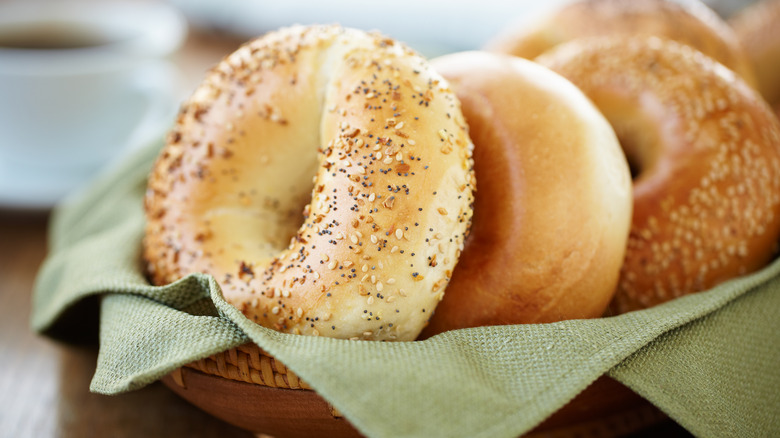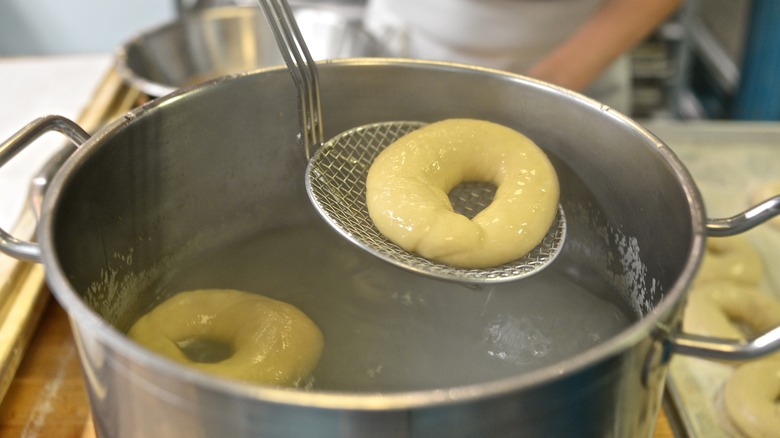Why Boiling Bagels Is A Crucial Step In The Baking Process
Almost every bagel recipe you run into will have at least one similarity: They will all instruct you to boil your dough before baking it. Throwing bread dough into hot water can be a strange concept for some, but it's an important step to ensure quality bagels. Why? As with a lot of things in the kitchen, we'll have to turn to science for the answer.
Boiling the dough before baking is what gives a bagel its signature chewy, thick exterior. This step is where the starch in the dough is gelatinized and the yeast is partially deactivated. When starch is gelatinized, it stretches and sets the structure of the bagel; and the slight deactivation of yeast is what allows bagels to be flatter than other breads. If active proofing was not stopped during this step, the bagels would puff up much more in the oven.
Not boiling a bagel will lead to strangely shaped bread, as well a different texture; the longer a bagel is boiled, the chewier the crust and the denser the inside. Meanwhile, a shorter boil leads to a more pliable exterior and tender interior. Another important thing to keep in mind is that a "bagel" that isn't boiled... isn't really a bagel at all. Merriam-Webster defines a bagel as "a firm doughnut-shaped roll traditionally made by boiling and then baking," and baking professionals agree. Historical roots also say a bagel must be boiled — bagels were created by Jewish people in Poland as a rebellion against antisemitic bread-baking laws, and the loophole was found by boiling the dough before baking it.
Tips and tricks for boiling bagels
Most bagels, even the famous ones in New York, are boiled in more than just water. For instance, baking soda has become a common ingredient to mix in water to give the bagel a rich, golden brown color post-bake. Measurements for baking soda vary between recipes from 1 teaspoon to 1 tablespoon added to around 8 cups of boiling water; just know that more baking soda equals a more pretzel-like product. Other ingredients, such as salt, honey, molasses, malt sugar, barley malt extract, brown sugar, and even beer, are added mostly for flavor.
As with the baking soda measurements, other tips and tricks aren't "standards" so much as they are guidelines for you to evaluate and choose from for your desired bagel. For a thinner, less chewy outside layer on the bagel, boil for a shorter amount of time, around 30 seconds on each side. For a thicker outside, go for closer to one minute per side. If you're making a much larger or smaller bagel, factor that into your boiling time decision.
One thing to take note of is that water temperature will change over time, even if you keep the water at a boil or simmer. If you just keep adding bagels to the water one after the other, the water temperature may be lower and lead to less-than-ideal bagels. When you add a round of bagels, let them boil for as long as you want, then take a few minutes to reset the water before resuming.

